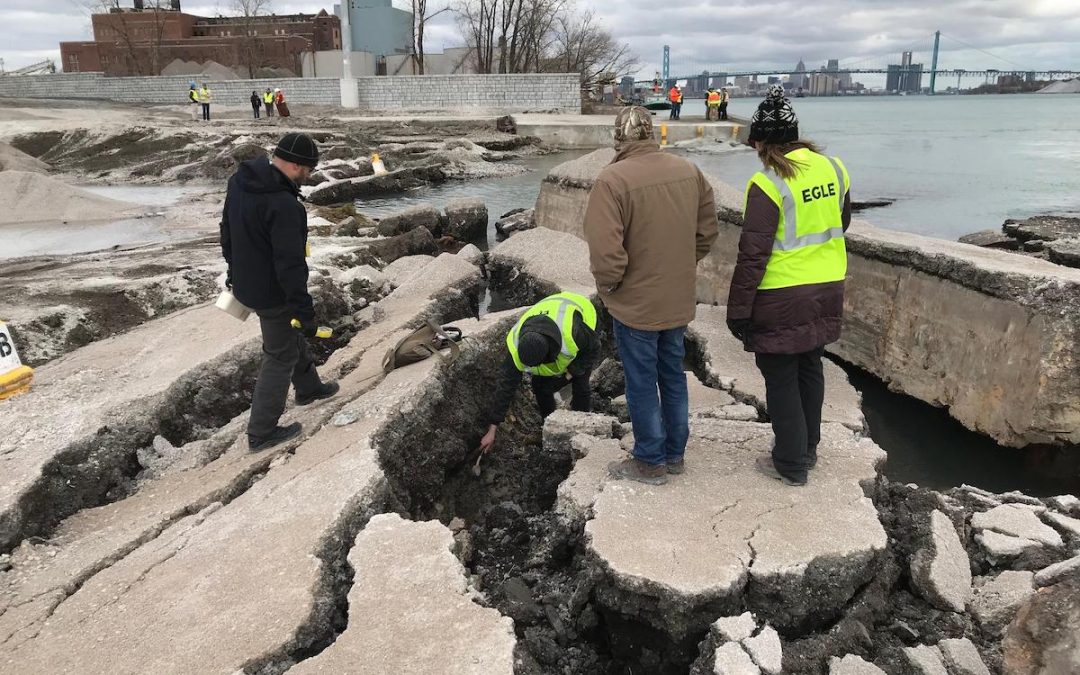“Water is not a solid wall, it will not stop you. But water always goes where it wants to go, and nothing in the end can stand against it.” —Margaret Atwood, “The Penelopiad”
Michigan’s lakes, rivers and streams represent some of our greatest assets in terms of tourism and business. And, of course, many dream of a home on a lake with views of our inland, freshwater oceans. Ironically, those same lakes, rivers and streams can pose a threat to landowners.
Michigan’s present lake levels are the highest that they have been since 1986. The U.S. Army Corps of Engineers also believes water levels may increase by an additional foot in some places in 2020. News reports are full of homes and properties collapsing from bluffs and shorelines and if water levels increase, we can expect more of the same, going forward. Some of these can pose very serious environmental problems, like the Nov. 26 collapse of a dock on the Detroit River that caused the potential release of hazardous materials.
- Waste water treatment plants: EGLE suggests that WWTPs identify discharge points and avoid practices that may result in bypasses or overflows. In addition, high waters can cause erosion and collapses of sewers, which will need to be monitored.
- Industrial and commercial facilities: Best management practices could include reducing water use or flows. The facility may also choose to move its discharge location.
- Combined sewer overflows, retention treatment basins or other outlets: Combined sewers are those that transmit stormwater, domestic sewage and industrial wastewater, which are transmitted to a treatment plant. Obviously, in heavy rainfall events, treatment plants could easily be overwhelmed and are disfavored, although many older systems remain in place. BMPs would include means by which to reduce flow into the system and avoid backflows.
- Stormwater: Those with stormwater NPDES permits already must take measures to reduce runoff and control contaminants that may be carried with it. EGLE’s bulletin suggests reviewing existing plans to supplement them and to conduct maintenance on existing control systems to make sure that they are working properly.
As EGLE notes, there are many causes for higher water levels. In addition, climate change researchers report that heavy rain events “drop 31 percent more precipitation in the Midwest than they did 50 years ago.” EGLE’s bulletin is just one step toward managing water without actually investing in water infrastructure, although a longer-term solution will likely require significant investment of public resources.
NPDES permit holders are now charged with preparing vulnerability analyses. EGLE advises that these be kept available for regulators to review, ominously adding the following: “If there are any NPDES permit violations due to high water levels, then this analysis and mitigating action you take may help regarding any potential compliance activity.” This implies that failure to comply with this “request” may expose the permit holder to future enforcement action.
This article appeared in Crain’s Detroit Business. Read more here.

